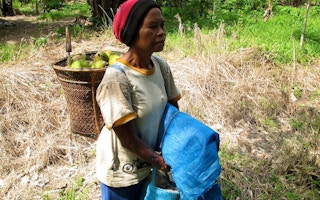Governments, donors and investors must bolster locally-controlled forest businesses if they wish to deliver public goods, support livelihoods and help tackle poverty and climate change, says a new report by the International Institute for Environment and Development (IIED) and the Forest and Farm Facility (FFF).
Drawing on research in Brazil, Burkina Faso, Cambodia, the Democratic Republic of the Congo, Mexico, Nepal, Tanzania and Vietnam, the report identifies four main ways new support could transform locally-controlled forestry businesses:
• Helping such businesses secure land and resource tenure
• Making it easier for these businesses to form effective organisations so they can achieve economies of scale and the power of collective bargaining
• Investing in programmes that strengthen business know-how
• Revitalising technical extension services so they can play a valuable role in forest-farm mosaics that deliver local and global public goods.
“The sheer scale of locally controlled forest businesses means they have huge potential to provide food, energy, water and income and help to stabilise our changing climate,” says Duncan Macqueen, principal researcher in IIED’s Forest Team and co-author of the report. “However, the support they receive is inadequate. It is crucial that investment in locally-controlled forestry increases so these enterprises can realise their potential.”
The report was launched on 20 May at the British Academy, during a meeting about the challenges and opportunities that efforts to regulate the timber trade present to small-scale and community forestry.
The meeting, organised by Chatham House and the Rights and Resources Initiative on 19-20 May, focused on policies and regulations such as the EU’s Forest Law Enforcement, Governance and Trade (FLEGT) Action Plan and the EU Timber Regulation, which aim to ensure that only legally harvested timber reaches the European market.
“Small-scale forestry enterprises in Africa, Asia and Latin America already face challenges in accessing raw materials, marketing products and securing finance,” says Simon Milledge, who leads IIED’s forest team. “They will now also struggle to conform to new legality requirements. This is not only a problem for such producers but may also lead to conflicts that will undermine a country’s access to the EU market. Meanwhile, law enforcement can disproportionately penalise the most vulnerable smaller-scale actors.”
“For most local forest producers, export timber is only a small fraction of their business, most of which focuses on growing domestic markets,” says Milledge. “What they really need is support from governments and investors to develop their businesses so they can meet rising in-country demand for timber in a sustainable way. The FLEGT Action Plan needs to respond to the realities of growing domestic markets and the needs of the mostly informal, small-scale sector that supplies them.”
Worldwide, 1.3 billion people rely on forests for their food, energy, water and income. Done right, says the new report, locally-controlled mosaics of forestry and farm businesses can provide sustainable livelihoods for such communities that restore forests on a landscape scale.
“The EU FLEGT programme needs to find new ways to invest in locally controlled forestry,” says Macqueen. “Otherwise, any reputation and positive impacts of tighter regulation on industrial forestry will be tarnished by, at best, indifference to, or at worst, negative impacts on the local livelihoods of the forest dependent poor.”
“Helping small scale forest and farm enterprises to organise themselves gives them a better chance to make their presence felt and have their views heard during the process of developing rules and regulations which affect their livelihoods and landscapes,” says Jeffrey Campbell, manager of the Forest and Farm Facility. “Strengthening their management helps them add value and can generate returns at multiple levels and create strong and sustainable local controls over illegal logging - benefitting a much larger sector of the rural economy.”
Meanwhile, outcomes of the Forest Asia 2014 Summit brought challenges for smallholder foresters into focus. Ways forward included:
- managing risks in investments with smallholders and increasing the scale of production and the quality of products;
- identifying adequate models of cooperation for smallholders, such as through cooperatives, federations and other arrangements, and supporting small and medium-sized enterprises and entrepreneurship
The two-day meeting held in Jakarta, Indonesia addressed how to accelerate the Asia region’s shift towards a green economy through the sustainable management of its forests and landscapes.
The full report is available to download.










